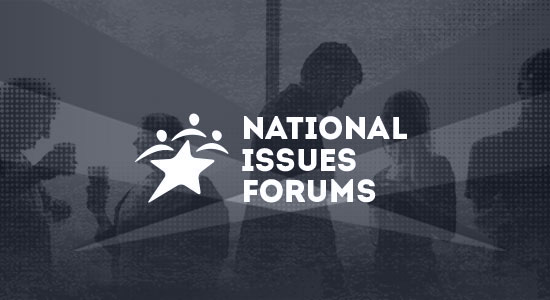The Making of a Public by Craig Paterson
Blog Category:
from a blog post by Craig Paterson at Deliberative IDEAS
We all have a place and a role in the ‘public.’ This appreciation of an all-inclusive participation in a shared, human environment goes back at least to the Greeks as they pondered their common good and civic purpose. The Greeks had already recognized that an awareness of a ‘public’ as an entity in its own right…larger and more significant than just the accumulation of disparate individuals. Those of us who seek to hear the voice of the ‘public’ today are challenged with all the classical barriers to public conversation AND some modern barriers that are presenting themselves for the first time in human history.
The ‘public’ exists and functions without our awareness…it doesn’t need anyone’s permission to be powerful. But…our awareness and appreciation of the ‘public’ CAN have some significant benefits…as we solve problems together, as we organize together to maximize our effective use of resources, and as we build great communities together. We have learned through the years, however, that this ‘public’ awareness doesn’t happen by itself…it requires its own careful attention.
Several years ago, we identified ‘public-making’ as one of the most critical roles in any deliberative project…large or small. And lately…the need for intentional and effective methods in gathering people into deliberative settings has been the theme of many blog posts and articles throughout the dialogue and deliberation community. Just for your information, here is the link to the matrix our California NIF Network is using…as an expansion from the original work on deliberative roles of a Kettering Foundation workshop:
Deliberative Roles for Community Teams matrix
Building on this basic understanding of ‘public-making’ then, we can begin to identify some key variables in this practice. Some communities have ‘public-makers’ who seem to be completely natural in the role without any prompting or teaching…it’s in their genes! Other communities have people who can become effective ‘public-makers’ with some encouragement and practice. A wide range of variables can be considered, tried and evaluated through time, creating a continuous, upward-spiral in learning and doing. Here are some thoughts from last May on several of these variables... (read the full article)


Comments
Religious and Secular Citizens in the Public
In this work is any attention given to the fact that the public can be divided into citizens with strong religious convictions and citizens with a purely secular orientation? Since a number of major theories of democracy, e.g. Rawls' public reason and Habermas's communicative action address issues of religion in the public square, any attempt to address the public needs to take this division into account. I find no reference to this requirement above.